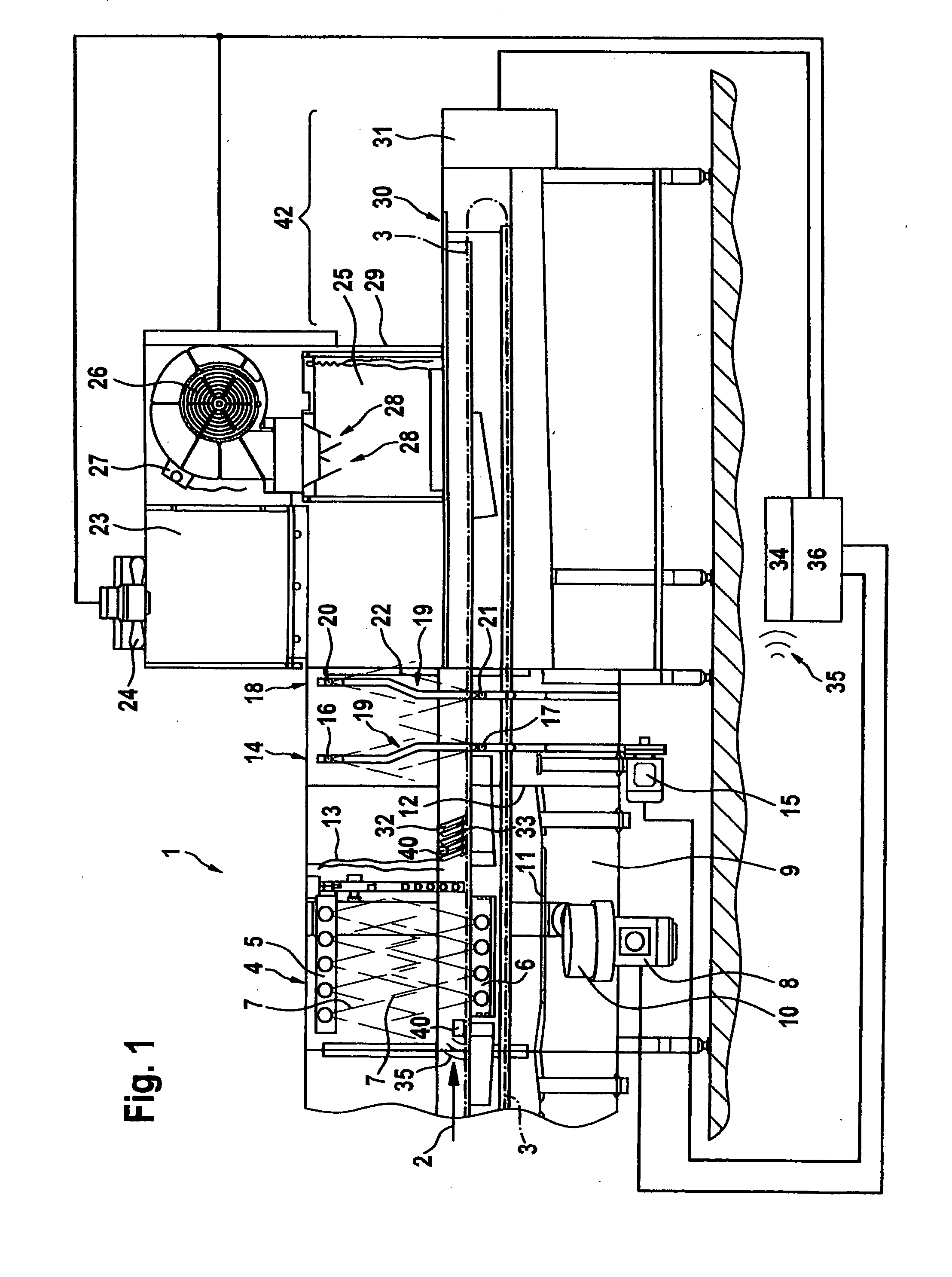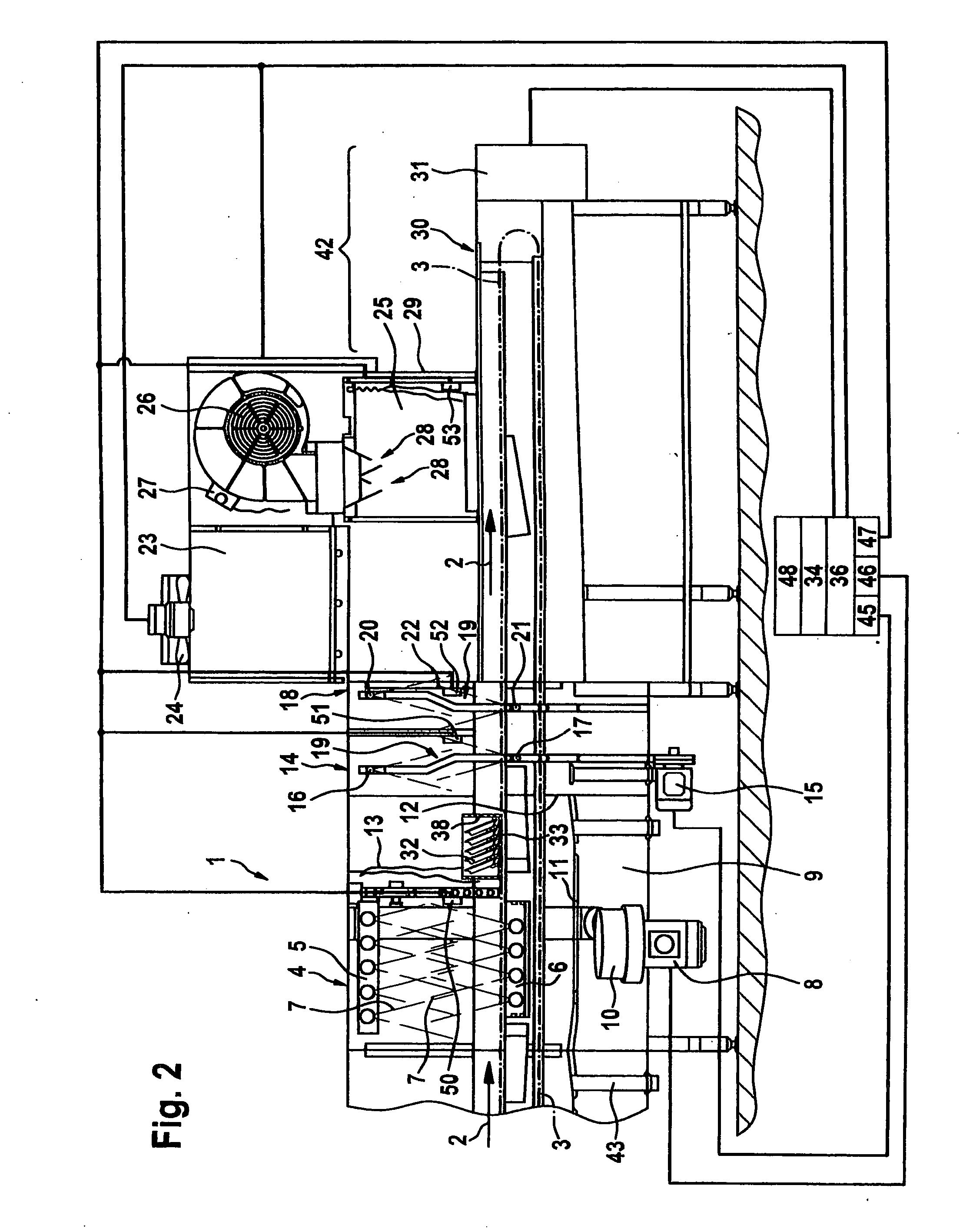Method for assessing and guaranteeing the thermal hygiene efficiency in a multi-tank dishwasher
a dishwasher and thermal hygiene technology, applied in the direction of cleaning process, cleaning apparatus, hollow article cleaning, etc., can solve the problems of not being able to achieve the same microorganism reduction, the standard cannot be applied, and the test of microorganism reduction according to this standard can only be carried out at the customer's premises at considerable expense, so as to improve the processing safety
- Summary
- Abstract
- Description
- Claims
- Application Information
AI Technical Summary
Benefits of technology
Problems solved by technology
Method used
Image
Examples
Embodiment Construction
[0035] The view shown in FIG. 1 is of a conveyor-type dishwasher 1 in which items 32 to be cleaned are transported in transport direction 2 through different treatment zones of the conveyor-type dishwasher 1. A conveyor device 3, which is designed as a continuous conveyor belt in the view according to FIG. 1, transports the items 32 to be cleaned through the different treatment zones of the conveyor-type dishwasher 1. Seen in the transport direction 2 of the items 32 to be cleaned, they pass first of all through a washing zone 4.
[0036] Inside the washing zone 4, there are a first washing system 5 and a second washing system 6. Cleaning fluid 7 exits from these in the form of jets. The first washing system 5 and the second washing system 6 are supplied with cleaning fluid via a first pump 8. The first pump 8 is accommodated inside a washing zone tank 9 which is assigned to the washing zone 4. A pump housing 10 is located in the upper area of the first pump 8; the washing zone tank 9...
PUM
 Login to View More
Login to View More Abstract
Description
Claims
Application Information
 Login to View More
Login to View More - R&D
- Intellectual Property
- Life Sciences
- Materials
- Tech Scout
- Unparalleled Data Quality
- Higher Quality Content
- 60% Fewer Hallucinations
Browse by: Latest US Patents, China's latest patents, Technical Efficacy Thesaurus, Application Domain, Technology Topic, Popular Technical Reports.
© 2025 PatSnap. All rights reserved.Legal|Privacy policy|Modern Slavery Act Transparency Statement|Sitemap|About US| Contact US: help@patsnap.com



